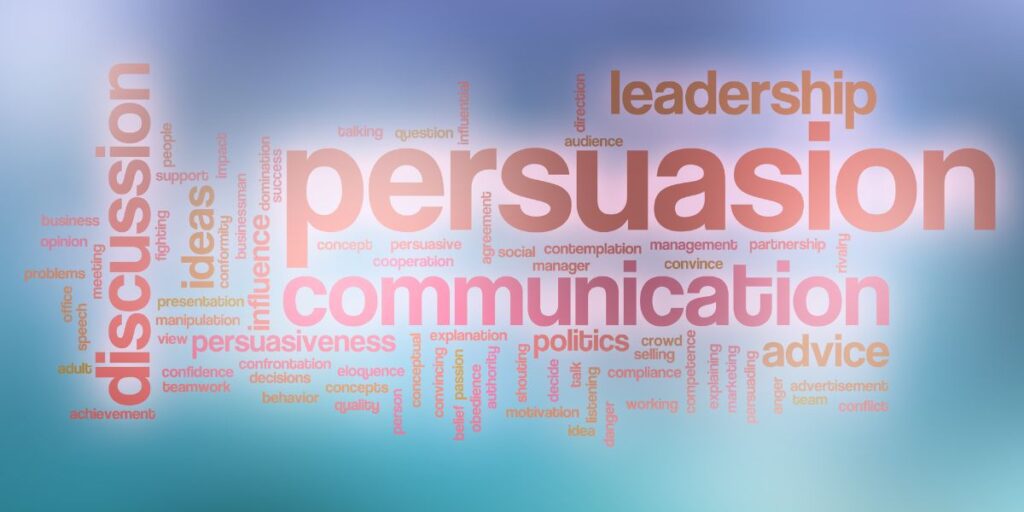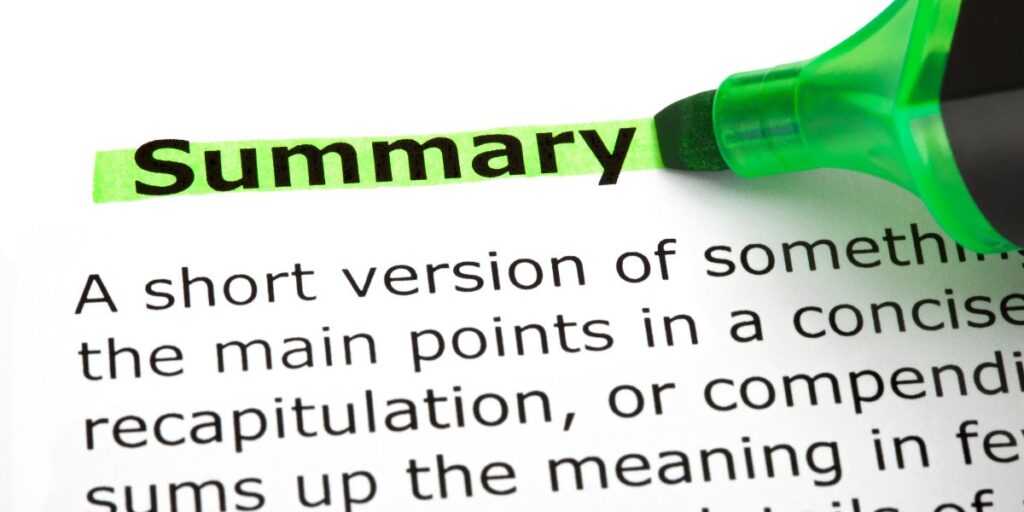7 Easy Steps To Write a Persuasive Article

When you buy something through one of the links on our site, we may earn an affiliate commission.
Writing a persuasive article is essential when creating engaging, results-driven content is your primary goal.
Now, more than ever, people want hard facts, informed opinions, and clear direction when reading business-related content. It’s known that web pages are often closed in less than 20 seconds if they aren’t engaging.
So, to gain several minutes of user attention, you will have to communicate your value proposition within the first 10 seconds of a potential customer landing on your content.
If you aren’t using a professional copywriter who offers an essay writing service, you will need to brush up on the finer points of related articles.
In this article, we introduce you to the technicalities of persuasive writing. We also teach you how to write content that will satisfy Google and the user. Using these valuable tools will save time and get those conversions!
Contents
What is a Persuasive Article?

A persuasive article is the most common writing style used to convince potential customers of a business’ worth. Also known as a persuasive essay, it is important to note that this writing style has a definite structure.
A good persuasive essay topic also has its own set of language units to communicate arguments. As a compelling author, you must inform the reader and convince them that your way of thinking is best.
Successful persuasive essays include a combination of thorough research and carefully selected words and phrases to promote products and services. This is a crucial part of having an effective website.
Your main aim when writing persuasive content is to be so confident and convincing that your educated opinion leaves no doubt in the reader's mind of your competence.
7 Steps to Writing a Persuasive Article
To help you get started on your way to writing simple yet effective persuasive articles, we streamlined the process to seven easy steps.
Remember, your persuasive content might be the first contact any future customer has with your brand.
With this in mind, take the time to follow the process, giving five-star treatment to all your work for the ultimate results.
Step 1: Know Your Target Audience
Knowing and understanding who your target audience is the springboard to getting your point across effectively. This vital step will allow you to decide what ‘language’ you will want to write in.
Persuasive Essay Example:
How you address a holidaymaker searching for luxury holidays in California would be completely different from that of a seasoned gamer wondering if they should switch from Xbox to PlayStation.
Step 2: Research the Topic

Persuading an audience when you are writing content is easier when you write about something you truly believe in.
Unless the topic is something you know about in your day-to-day life, you will have to allocate enough time to thoroughly research the task.
This will include collecting past and trending information about your topic for reference. Your research material should also collect current price lists and past customer reviews.
Keep in mind that your research should include your product and similar products and services available from your competitors.
Step 3: Create a Persuasive Essay Outline
Outlining your article before you sit down to write it can help you organize your thoughts, streamline your research, and lay out the blueprint of your content’s structure.
This way of working will also save you from wasting time on unnecessary detail. Add all your main points to your outline, and pair each with relevant evidence collected from your sources.
Step 4: Write a Powerful Introduction

Starting with a strong introduction, your first paragraph’s main purpose is to present the general premise of the content. Getting straight to the point with the promise of giving them the answer they want is key! In a nutshell, you have to give the user a reason to want to stay and read the whole article.
Sometimes using a personal anecdote from your own life or information from your research will help find common ground between you and the reader.
Your introductory paragraph should also present the content topic. This can articulate the article's main point in one or two sentences, while the rest of the article will reinforce that point. You will also need to prepare the reader for what lies ahead in the article.
Step 5: Use Body Paragraphs
Body paragraphs will be the “meat” of your persuasive article. These paragraphs should contain relevant and truthful information to back up your content. “Quality over quantity” should be your persuasive writing mantra.
A good body paragraph contains three main sections. Each section should include a topic sentence, relevant supporting sentences, and a closing or transition sentence. This structure keeps each paragraph focused on the main idea while providing clear, concise information.
The body is where you will also discuss an opposing argument and why it should be discredited.
Always ensure that any claims you make are supported with credible or relevant information. If you use reviews or quotes, include the writer's name and title so your writing remains focused and to the point.
Step 6: End with a Summary of the Article
Your conclusion is the final part of writing that will summarize the entire persuasive piece.
The conclusion paragraph of your persuasive paper should restate your thesis, rehash the key supporting ideas dealt with throughout the work, and offer your final impression of the central idea.

You should include your call-to-action at the end of your article if you want to urgently persuade readers to make a fast decision about a particular issue. This issue is that they should choose your products and service!
Step 7: Be Mindful of Sentence Structure
We live in an age where online writing support gets better daily. By making the most of free writing tools such as Grammarly and Hemingway, you can take your persuasive writing style to the next level.
Once you have written your content, always proofread it a few times before submitting or presenting. A few missed words, grammatical errors, or sentence structure problems will weaken your intention and impact your credibility.
Here are 39 useful content writing tools every blogger should know about.
When to Use Persuasive Arguments
As mentioned before, persuasive essay writing is the crux of quality website copy. Additionally, great business writers also use persuasive writing for online and offline content. This content includes:
- Social Media Marketing
- Business Proposals
- Articles
- Newsletters
- Blog Posts
- Memos
- Emails
- Meeting Requests
- Speeches
- Reports
An Author's Purpose When Writing a Persuasive Article

When writing a persuasive article, an author should use writing skills, persuasive text, and logical argument to convince the reader to believe an idea or to take a course of action.
Titles and prefaces go a long way to writing a great persuasive essay. The writer will need to be convincing without being pushy or confrontational.
Moreover, the writer's background also has much to do with a successful persuasive essay. It could indicate a business, a research facility, a cause, or an organization that will strengthen the main argument.

What is the Rhetorical Triangle?
One of the best ways to earn the trust of your target audience, and win them over, is by using three important components when writing a persuasive essay. These are your company’s authority, logical arguments, and emotions.

In Ancient Greece, philosophers and students used a collection of elements known as the “Rhetorical Triangle” for their arguments and categorized the points as ethos, pathos, and logos.
Hundreds of years later, these strategies are still being used in day-to-day writing, even more so in the business world. You might wonder how leading brands use these three writing methods in their content to appeal to audiences. Read on to find out!
- Ethos - affirms the credibility of the speaker or writer. This establishes the author as an authority on the subject and explains why the reader should trust the author's information and opinions.
- Pathos - appeals to the emotions of the audience. This angle is arguably the most effective and most immediate rhetorical appeal within the triangle because it establishes common ground and a connection between the audience and the speaker.
- Logos - presents the logic and reasoning behind a claim. This portion includes facts and evidence that support the point the author conveys. It substantiates the impact of the effects of appealing to ethos and pathos.
A further three elements are represented by the lines connecting each rhetorical triangle’s points. These devices are purpose, tone, and style. Considering all six elements can help you develop an effective argument.
For these elements to sound persuasive in writing, authors should use techniques such as clarity, consistency, repetition, specific and precise language, calls-to-actions, and power words to help content be as engaging as possible.

A Few Golden Rules for Persuasive Writing
Other than using “power words” and relevant transitional phrases, your persuasive article's writing style and tonality should be credible and convincing. For that, it needs to be brief and concise, punchy and to the point using:
- Active voice and simple present tense
- Straightforward, uncomplicated language
- Credible and up-to-date evidence
- One topic per paragraph
- Power words and strong transitional phrases
- Descriptive language that includes emotive adjectives and adverbs if relevant
What Are Power Words?
Power words are words that smart copywriters use to trigger a psychological or emotional response.
This collection includes emotive words to entice greed, curiosity, trust, and lust, to name but a few.

“Power words” are so persuasive that people find them irresistible. Not only will these words attract the reader, but they also have the power to easily influenced them! They may even feel they can’t live without whatever it is you are trying to sell them.
Take a look at our list of 101 buying words that will ensure conversion!
Examples of Words and Phrases in Persuasive Writing
Once you have figured out persuasive writing techniques for your article, you should remember to include the appropriate words and transitional phrases.
You know your audience better than anyone else. So, what type of persuasive language strikes a chord with your prospects? Keep digging deeper and experiment with how to connect with more people who are the perfect fit for your products and services.
To help inspire your persuasive technique, we have included a few persuasive writing examples for each step of the way.
Present your Topic Confidently

- When was the last time you…
- In my point of view…
- It is clear that…
- Picture this…
- Although it is commonly believed…
Illustrate the Point
- For instance…
- In particular…
- Such as…
- Also…
- In other words…
Introduce an Example
- Examples include…
- To illustrate…
- In support of this…
- Supporting evidence shows…
- I reached this conclusion after finding…
Make a Suggestion
- To this end…
- Keeping this in mind…
- For this purpose…
Support the Opinion
- Furthermore…
- Equally important…
- Moreover…
- Additionally…
- Equally as important…
Compare and Contrast
- On the other hand…
- Nevertheless…
- Whether or not…
- Despite…
- By the same token…
Conclude by Stating the Obvious
- In other words…
- With this in mind…
- In short…
- To wrap things up…
- Try it for yourself if you want to see similar results…
Why is Persuasive Writing Important?
Remember that persuasive writing is a way of organizing the pros and cons of an issue into one document. Then, after that, convince the reader to believe and act on what your intention is.
Furthermore, this type of writing can help you develop critical thinking skills and build your self-confidence, which is essential if you want a good turnover.
All this can be achieved in a non-confrontational way that will get the reader to work with you and not against you. The outcome will be a loyal client base that will return time and again to support your business.
Writing a Persuasive Article: Conclusion
In summary, while persuasive writing is straightforward, it is essential to day-to-day copywriting.
If you want to achieve a result that converts into a changed way of thinking or a sale, you must perfect the art of writing an effective persuasive essay.
Focussing on a powerful introduction and body content that is to the point and not biased will hold the reader’s attention while you put forth your persuasive argument. All that’s left is to reaffirm the topic and the point of your persuasive content to conclude your writing process successfully.
If you want to outsource your content writing, here is a list of 12 of the best content writing services we have tried.
Want to learn step-by-step how I built my Niche Site Empire up to a full-time income?
Yes! I Love to Learn
Learn How I Built My Niche Site Empire to a Full-time Income
- How to Pick the Right Keywords at the START, and avoid the losers
- How to Scale and Outsource 90% of the Work, Allowing Your Empire to GROW Without You
- How to Build a Site That Gets REAL TRAFFIC FROM GOOGLE (every. single. day.)
- Subscribe to the Niche Pursuits Newsletter delivered with value 3X per week
My top recommendations

















